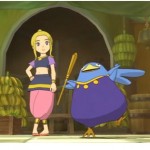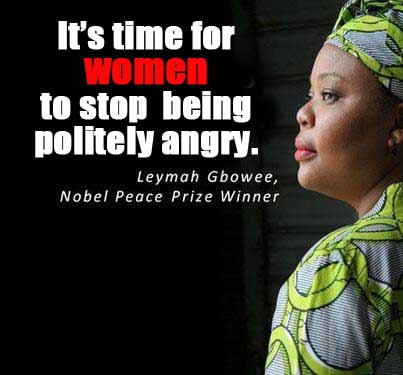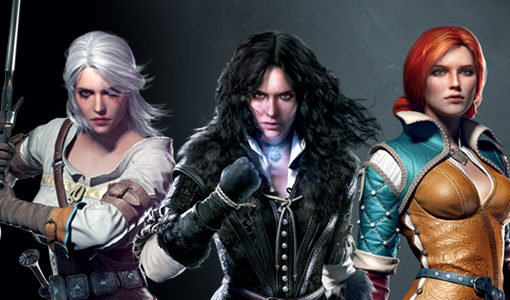I’m a woman and a gamer and I have been for 37 years, since I was a girl of 7 fighting with my cousins over handheld Coleco games. 1976. Back before we even thought about female characters in games. Our characters were blips on the screen. No head, no body, no nothing. Just a blip. The implication (in hindsight) was, of course, that the blips were professional sports players and male.
And then came female characters. The ones that I remember best were Ms. PacMan, the pink frog in Frogger, and Daphne from Dragon’s Lair. Strange and chronologically staggered list, but those are the ones that always stand out most for me. Again, in hindsight, only one of the 3 characters were actually playable. The other 2 were just there waiting to be saved by the male protagonist in the game. The pink frog waited for Frogger and Daphne waited for Dirk. I can’t tell you how many quarters I spent playing these games, how many movies I missed parts (or in cases all) of because the only Dragon’s Lair machine that I knew of was in the lobby of the movie theater.
 At the age of 44 I still consider myself a hardcore gamer and I find myself playing a lot of AAA and indie titles. I study games, write about games, hell I love games. But, I recognize the limitations of games. I also find that I am always waiting for and purchasing new games that promise me strong, independent female protagonists. I’ve been sucked in by the promise of Tomb Raider, Remember Me, The Last of Us, Beyond: Two Souls, Transistor, and any number of other games. Unfortunately, more often than not I have been disappointed. Lara Croft didn’t really become the heroine that I needed until the game actually ended (and the rape narratives? Too much.), Nilin was weak, unquestioning, and actively manipulated other women to her own end, and while The Last of Us did have at least one strong female NPC, Ellie was only a secondary character who needed to be protected and not the ass kicking protagonist that we seemed to be promised with the first unveiling of the game. Through it all I am just waiting for someone to finally get it right.
At the age of 44 I still consider myself a hardcore gamer and I find myself playing a lot of AAA and indie titles. I study games, write about games, hell I love games. But, I recognize the limitations of games. I also find that I am always waiting for and purchasing new games that promise me strong, independent female protagonists. I’ve been sucked in by the promise of Tomb Raider, Remember Me, The Last of Us, Beyond: Two Souls, Transistor, and any number of other games. Unfortunately, more often than not I have been disappointed. Lara Croft didn’t really become the heroine that I needed until the game actually ended (and the rape narratives? Too much.), Nilin was weak, unquestioning, and actively manipulated other women to her own end, and while The Last of Us did have at least one strong female NPC, Ellie was only a secondary character who needed to be protected and not the ass kicking protagonist that we seemed to be promised with the first unveiling of the game. Through it all I am just waiting for someone to finally get it right.
But, this isn’t about me. It’s about my daughter, Pea. Pea played her first video game when she was 18 months old. She picked up a  Nintendo DS that I had left on the sofa and started playing Scribblenauts. Ok, not playing in the way that the game was intended to be played but playing by her own rules. She simply liked making Maxwell walk around. Over the years she has played a number of different games on the DS and more recently on consoles. Until recently I have chosen all of her games carefully, providing her with games that had female characters that she could identify with.
Nintendo DS that I had left on the sofa and started playing Scribblenauts. Ok, not playing in the way that the game was intended to be played but playing by her own rules. She simply liked making Maxwell walk around. Over the years she has played a number of different games on the DS and more recently on consoles. Until recently I have chosen all of her games carefully, providing her with games that had female characters that she could identify with.
Earlier this year she picked a game case off of the shelf, studied the picture, and asked if this was a game that was ok for kids to play. It was Ni No Kuni. Having already started to play the game myself I was pretty comfortable knowing that with a little narrative modding that I could be comfortable with her playing or watching me play as much as she liked. We spent the next several months playing over 100 hours of the game together until she actually beat it. But what stood out for me more than the fact that she had the dedication and patience to actually complete a full JRPG was her take on the characters that we played.
 While the hero of the story (and the main protagonist) was a young boy (Oliver) that was only about 3-4 years older than Pea herself he spends most of the game accompanied by a female party member (Esther) who fights alongside him to save her world. Once Esther joined our party Pea was excited to be able to play as the female character, but she immediately noticed that Esther did not have an adequate weapon for fighting the enemies. What she did have was a harp that cast spells on the enemy or helped control fighting familiars. The other thing that she noticed was Esther’s clothing. While all of the other characters were fully clothed, Esther fought with a bare midriff. Pea questioned why she was only partially protected and whether or not she would be cold in her state or partial undress. Either sadly or fortunately (or perhaps both), she role plays the game with her friends and makes Esther the hero and makes sure that “her belly is covered”.
While the hero of the story (and the main protagonist) was a young boy (Oliver) that was only about 3-4 years older than Pea herself he spends most of the game accompanied by a female party member (Esther) who fights alongside him to save her world. Once Esther joined our party Pea was excited to be able to play as the female character, but she immediately noticed that Esther did not have an adequate weapon for fighting the enemies. What she did have was a harp that cast spells on the enemy or helped control fighting familiars. The other thing that she noticed was Esther’s clothing. While all of the other characters were fully clothed, Esther fought with a bare midriff. Pea questioned why she was only partially protected and whether or not she would be cold in her state or partial undress. Either sadly or fortunately (or perhaps both), she role plays the game with her friends and makes Esther the hero and makes sure that “her belly is covered”.
So my question to you is this…why is it that 37 years after her mother first became a gamer my 5 year old daughter finds herself in the situation of having to ask these questions about female characters in games, their states of dress, and the roles that they play in games? She should not be forced to mod the narrative and staging of the game in her real world role playing.in order to make Esther a character who is equal to the male characters that she travels with in the game. I would like to end this letter with one simple and earnest request, that the games industry finally (after 4 decades) do right by the little girls who play video games and give them characters that reflect not only who they are, but what they can be.





7 thoughts on “An Open Letter to Game Designers From a Gamer and a Mother”
If this was the result of all that playtime, it was worth it.
I need a like button for your comment, Karabinus. 🙂
WHO THE HELL CARES? Seriously! Esther lives in an Arabian based city, use your god damn common sense and put that computer of yours to good use while you’re at it.
Actually I care. And while Esther does come from a desert city most of the fighting takes place in other climates (including the Artic) and more importantly Oliver was able to buy new clothes so why not Esther. And while I believe that thinking and talking critically about games in the hopes of educating folks about games is a good use of my computer perhaps trolling folks on the internet would be a better use?
A like button indeed! This is lovely Sam,
I’m hopeful that they might give us a female lead in the next Deus Ex, since they thought about it for the mobile game:
http://www.siliconera.com/2013/06/24/deus-ex-the-fall-could-have-had-a-female-protagonist-but-production-issues-interfered/
That would be very nice. That last iteration was just one ol’ huge disappointment! I actually pre-ordered that mess and wrote a conference proposal that involved using it (I used it partially with the caveat that, for me, it was too bad to finish). They really better step it up this time around…and leave the racist shit behind. One can only hope that they learned their lesson.